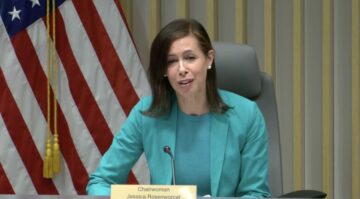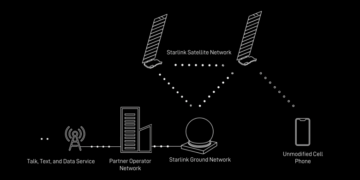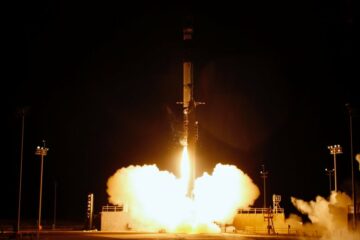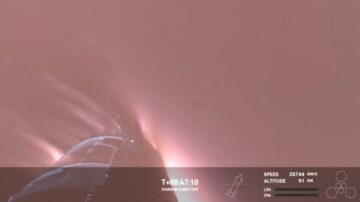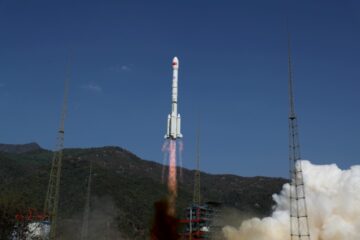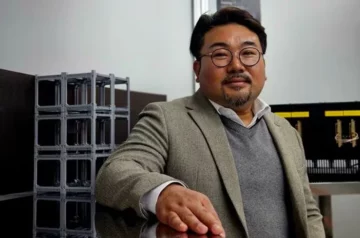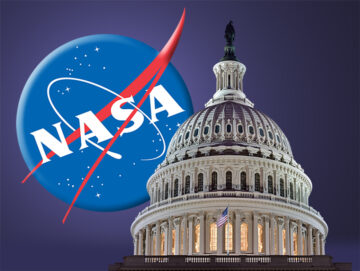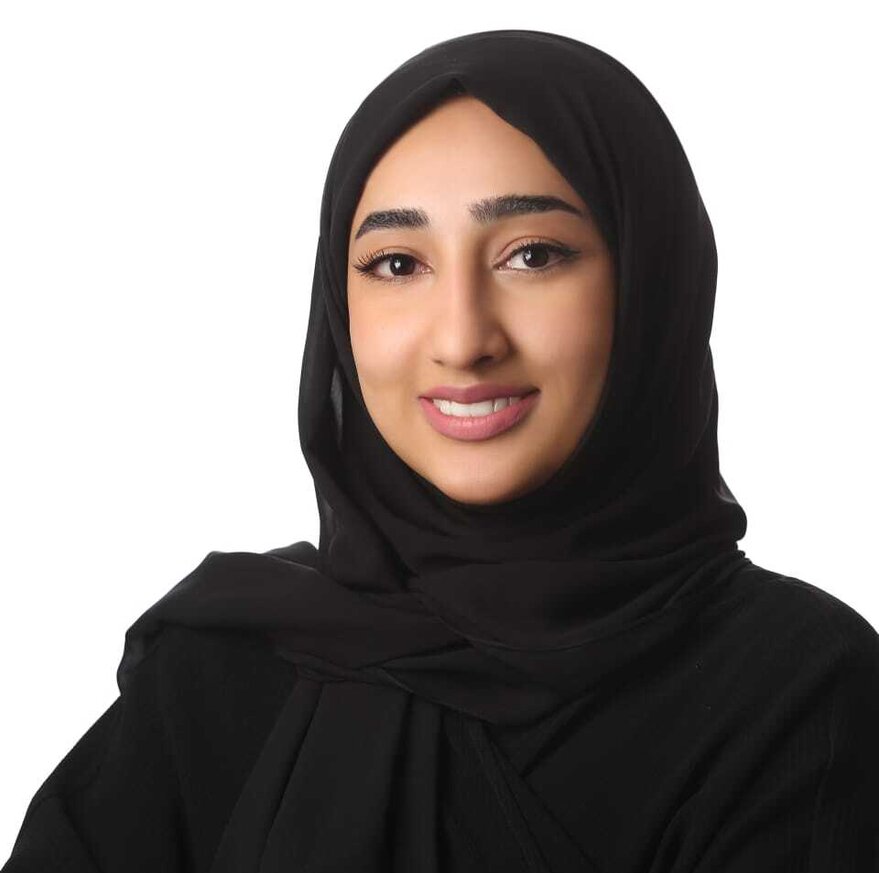
The United Arab Emirates Mission to the Asteroid Belt is ambitious. EMA will fly past six asteroids and rendezvous with a seventh, Justitia.
Equally ambitious is EMA’s national goal. To strengthen the Emirates’ private space sector, more than half the work will be performed by UAE companies.
Spearheading the EMA is Director Hoor Al Mazmi, who joined the UAE Space Agency in 2017 as a space science researcher. Al Mazmi earned a bachelor’s degree in mechanical engineering from Virginia Commonwealth University and a master’s in aerospace engineering from the University of Colorado, Boulder.
Al Mazmi spoke with SpaceNews about the goals, challenges and importance of the EMA.
What are your overall goals?
The most important goals for this mission, for the UAE, are to develop capabilities in space science and engineering through the partnerships and to allow private companies in the UAE to develop their capabilities and test out their systems and their knowledge in order to be competitive globally.
Why is this mission important overall?
We have both science and space resource objectives. The science objective is to understand the origin and evolution of water-rich asteroids. This is important because this can tell us more about how we have water on Earth and where that water came from. There’s a theory that water came from an asteroid impact. Going to the main asteroid belt can tell us more about the origin of water for all terrestrial planets.
The diverse set of asteroids that we’re visiting will give us more information about the water content of these asteroids. We will rendezvous with Justitia, which is the most important asteroid, scientifically, because it’s theorized that it migrated from the primordial Kuiper Belt.
What are your goals for the UAE space sector?
A big focus for the UAE Space Agency for the past couple of years was to develop the space private sector in the UAE. We’re using this mission as a way to develop the capabilities of startups and space companies within the UAE.
We’re doing that through the lander. When our spacecraft reaches Justitia, it will deploy a lander on its surface. That lander will be handled by the private sector in the UAE.
Has the UAE already selected the lander builders?
We have two private companies that are involved with this project and we’ll have more in the future. Currently, we have 971Space and Sadeen Space working on this. They’re both startups.
What is the schedule for this mission?
The launch is planned for 2028. We have a Venus gravity assist, then also a Mars gravity assist and an Earth gravity assist before we get to our first asteroids. Then, we’ll be flying by six asteroids and rendezvousing with Justitia by 2034.
What’s the most challenging part of all of this?
From my perspective, the most complicated part is the navigation. Not being sure exactly where these asteroids are in space, being able to target them and fly by them, and have our instruments get the signs that we need. That’s going to be challenging, but we have a capable team working on the navigation system. Then, rendezvousing with Justitia and not missing it is also a challenging part.
The other challenge would be to get as many people as we can involved. The main point of the mission is to develop capabilities and to get knowledge to the UAE and to build on the capabilities that were developed from the Emirates Mars Mission.
If somebody is not in the space sector, why would they care about water-rich asteroids?
Water is important for everyone. And our space-resources goals are going to enable future missions to get further in the solar system. Achieving our objectives of understanding how to get resources from asteroids in the main asteroid belt will allow future missions and humanity as a whole to advance further in our space exploration journey – to get further within the solar system and hopefully outside of the solar system. That’s the big objective. But then also, to get a better understanding of our solar system as a whole, how it evolved and how it became what it is that we see today.
Are you referring to getting water from asteroids for future missions?
Yes, that’s correct. That’s the beginning of the study for how we can potentially do that. Those are our space resource objectives. We won’t necessarily be able to do that at this point.
Are all of the asteroids that you selected water-rich asteroids?
Because they’re that diverse set of asteroids, they’re going to have different asteroid types and they will have varying amounts of water in them. Justitia is the one that’s most likely to have water ice underneath the surface because of its redness. Based on our understanding of the types of asteroids that we’re visiting, they have a potential for having water on them at varying amounts, but they wouldn’t necessarily all be water-rich.
Did you select the seven because they provide a diverse range of asteroids?
Yes. Chimaera, for example, is the biggest asteroid of its family. That could provide us with a lot of information about the Chimaera family as a whole in the asteroid belt. We also have Rockox, which is thought to be a combination of asteroid types.
They’re all interesting in their own way. Some of them were selected because they’re easy targets along the way, and it would be interesting for us to look at them. The main reason for choosing asteroids that are part of asteroid families is because they’ll give us insights on the families as a whole.
What do you think is going to be the impact of this mission for future science and technology research?
The asteroid community is excited about this mission and excited about what it would mean for us to visit Justitia and understand why it is so red and whether or not its origin is the Kuiper Belt. There are theories of all objects in the main asteroid belt coming from somewhere else. That could change the fundamentals of planetary science and the understanding of the asteroid belt and where these asteroids came from and their diversity.
How will EMA be important in the long term?
EMA has put together a national team for the UAE that comes from different entities that are all working together to achieve this mission. We have engineers and scientists – people from different entities all working together on this mission to achieve it.
That can give us a structure for future exploration missions. Especially since this is a capability development mission. We’ll learn a lot about how complicated missions like this can be successful and how people can work together from different countries and different entities to achieve something so complicated.
Related
- SEO Powered Content & PR Distribution. Get Amplified Today.
- PlatoData.Network Vertical Generative Ai. Empower Yourself. Access Here.
- PlatoAiStream. Web3 Intelligence. Knowledge Amplified. Access Here.
- PlatoESG. Automotive / EVs, Carbon, CleanTech, Energy, Environment, Solar, Waste Management. Access Here.
- BlockOffsets. Modernizing Environmental Offset Ownership. Access Here.
- Source: https://spacenews.com/probing-the-origin-and-evolution-of-water-rich-asteroids/
- :has
- :is
- :not
- :where
- 2017
- 2028
- a
- Able
- About
- Achieve
- achieving
- advance
- Aerospace
- aerospace engineering
- agency
- AL
- All
- allow
- along
- already
- also
- ambitious
- amounts
- an
- and
- Arab
- ARE
- AS
- assist
- Asteroid
- asteroids
- At
- based
- BE
- became
- because
- before
- Beginning
- being
- Better
- Big
- Biggest
- both
- build
- builders
- but
- by
- came
- CAN
- capabilities
- capability
- capable
- care
- challenge
- challenges
- challenging
- change
- choosing
- Colorado
- combination
- comes
- coming
- commonwealth
- community
- Companies
- competitive
- complicated
- content
- correct
- could
- countries
- Couple
- Currently
- Degree
- deploy
- develop
- developed
- Development
- different
- Director
- diverse
- Diversity
- do
- doing
- earned
- earth
- easy
- else
- EMA
- enable
- Engineering
- Engineers
- entities
- especially
- everyone
- evolution
- evolved
- exactly
- example
- excited
- exploration
- families
- family
- First
- flying
- Focus
- For
- from
- Fundamentals
- further
- future
- get
- getting
- Give
- Globally
- goal
- Goals
- going
- gravity
- Half
- handled
- Have
- having
- Hopefully
- How
- How To
- HTTPS
- Humanity
- ICE
- Impact
- importance
- important
- in
- information
- insights
- instruments
- interesting
- involved
- IT
- ITS
- joined
- journey
- jpg
- knowledge
- launch
- LEARN
- like
- likely
- Look
- Lot
- Main
- many
- many people
- mars
- master’s
- mean
- mechanical
- mechanical engineering
- migrated
- missing
- Mission
- missions
- more
- most
- my
- National
- Navigation
- necessarily
- Need
- objective
- objectives
- objects
- of
- on
- ONE
- or
- order
- Origin
- Other
- our
- out
- outside
- overall
- own
- part
- partnerships
- past
- People
- performed
- perspective
- Planetary science
- Planets
- planned
- plato
- Plato Data Intelligence
- PlatoData
- Point
- potential
- potentially
- private
- Private Companies
- private sector
- project
- provide
- put
- range
- Reaches
- reason
- Red
- research
- researcher
- resource
- Resources
- schedule
- Science
- Science and Technology
- scientists
- sector
- see
- selected
- set
- seven
- Signs
- since
- SIX
- So
- solar
- Solar system
- some
- something
- somewhere
- Space
- Space Companies
- space exploration
- spacecraft
- Startups
- Strengthen
- structure
- Study
- successful
- sure
- Surface
- system
- Systems
- Target
- targets
- team
- Technology
- tell
- term
- terrestrial
- test
- than
- that
- The
- The Future
- their
- Them
- then
- theory
- There.
- These
- they
- Think
- this
- those
- thought
- Through
- to
- today
- together
- two
- types
- UAE
- understand
- understanding
- United
- United Arab
- university
- us
- using
- Venus
- virginia
- Visit
- was
- Water
- Way..
- we
- were
- What
- when
- whether
- which
- WHO
- whole
- why
- will
- with
- within
- Work
- work together
- working
- would
- years
- you
- Your
- zephyrnet

